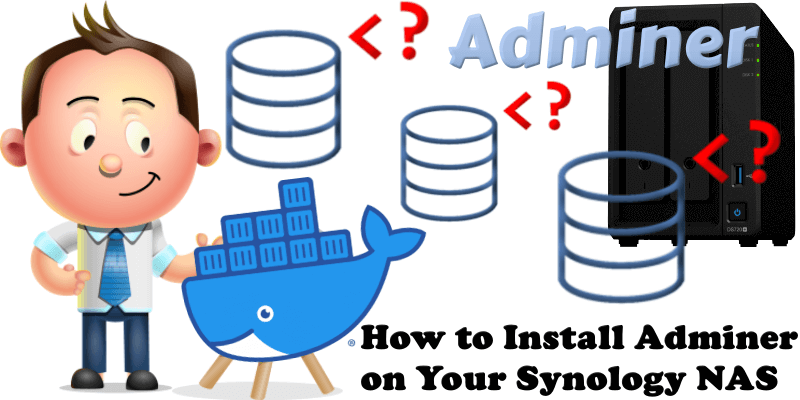
Adminer is a tool for managing content in databases. It natively supports MySQL, MariaDB, PostgreSQL, SQLite, MS SQL, Oracle, Elasticsearch and MongoDB. Adminer is distributed under Apache license in a form of a single PHP file. You can also check the key difference between Adminer and phpMyAdmin. In this step by step guide I will show you how to install Adminer on your Synology NAS with Docker & Portainer.
STEP 1
Please Support My work by Making a Donation.
STEP 2
Install Portainer using my step by step guide. If you already have Portainer installed on your Synology NAS, skip this STEP. Attention: Make sure you have installed the latest Portainer version.
STEP 3
Go to File Station and open the docker folder. Inside the docker folder, create one new folder and name it postgresql. Follow the instructions in the image below.
Note: Be careful to enter only lowercase, not uppercase letters.
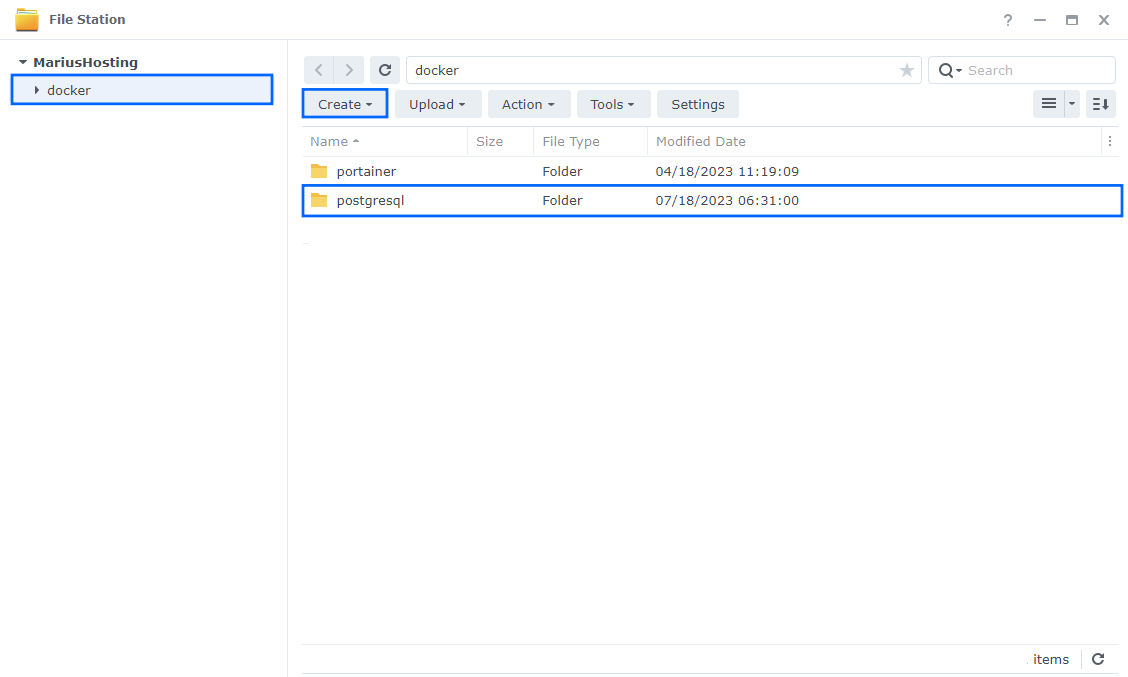
STEP 4
Log into Portainer using your username and password. On the left sidebar in Portainer, click on Stacks then + Add stack. Follow the instructions in the image below.

STEP 5
In the Name field type in adminer. Follow the instructions in the image below.
version: '3.9'
services:
db:
container_name: PostgreSQL
image: postgres
mem_limit: 256m
cpu_shares: 768
healthcheck:
test: ["CMD", "pg_isready", "-q", "-d", "marius_DB", "-U", "root"]
environment:
POSTGRES_USER: root
POSTGRES_PASSWORD: mariushostingroot
POSTGRES_DB: marius_DB
volumes:
- /volume1/docker/postgresql:/var/lib/postgresql/data:rw
ports:
- 2665:5432
restart: on-failure:5
adminer:
image: adminer:latest
container_name: Adminer
hostname: adminer
mem_limit: 128m
cpu_shares: 256
security_opt:
- no-new-privileges:true
user: 1026:100
ports:
- 8220:8080
restart: on-failure:5
Note: Before you paste the code above in the Web editor area below, change the value for POSTGRES_DB and type in your own database name. marius_DB is an example for a database name.
Note: Before you paste the code above in the Web editor area below, change the value for POSTGRES_PASSWORD and type in your own postgresql password. mariushostingroot is an example for a postgresql password.
Note: Before you paste the code above in the Web editor area below, change the value numbers for user with your own values. (Follow my step by step guide on how to do this.) 1026 is my personal UID value and 100 is my personal GID value. You have to type in your own values.
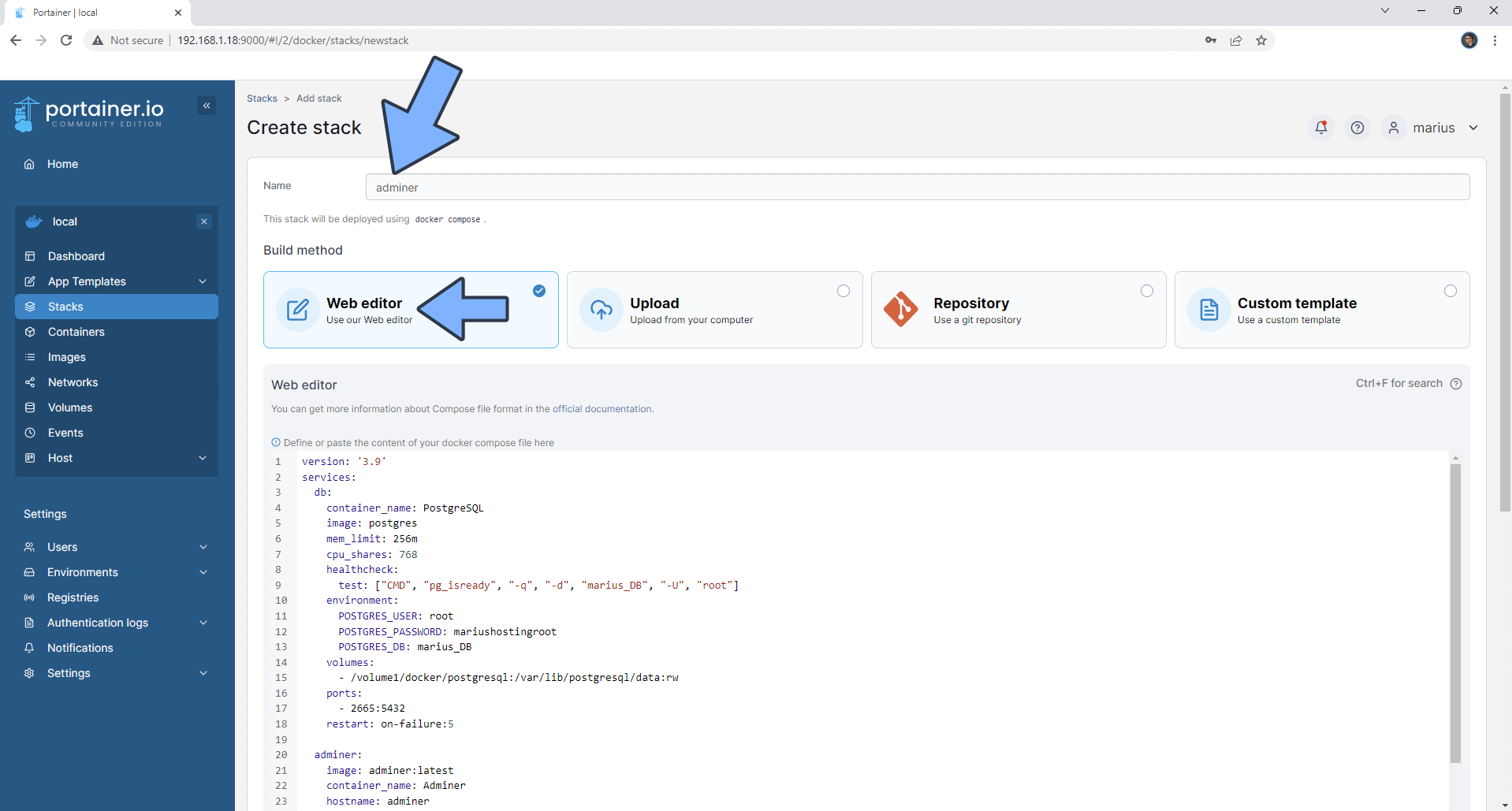
STEP 6
Scroll down on the page until you see a button named Deploy the stack. Click on it. Follow the instructions in the image below. The installation process can take up to a few minutes. It will depend on your Internet speed connection.
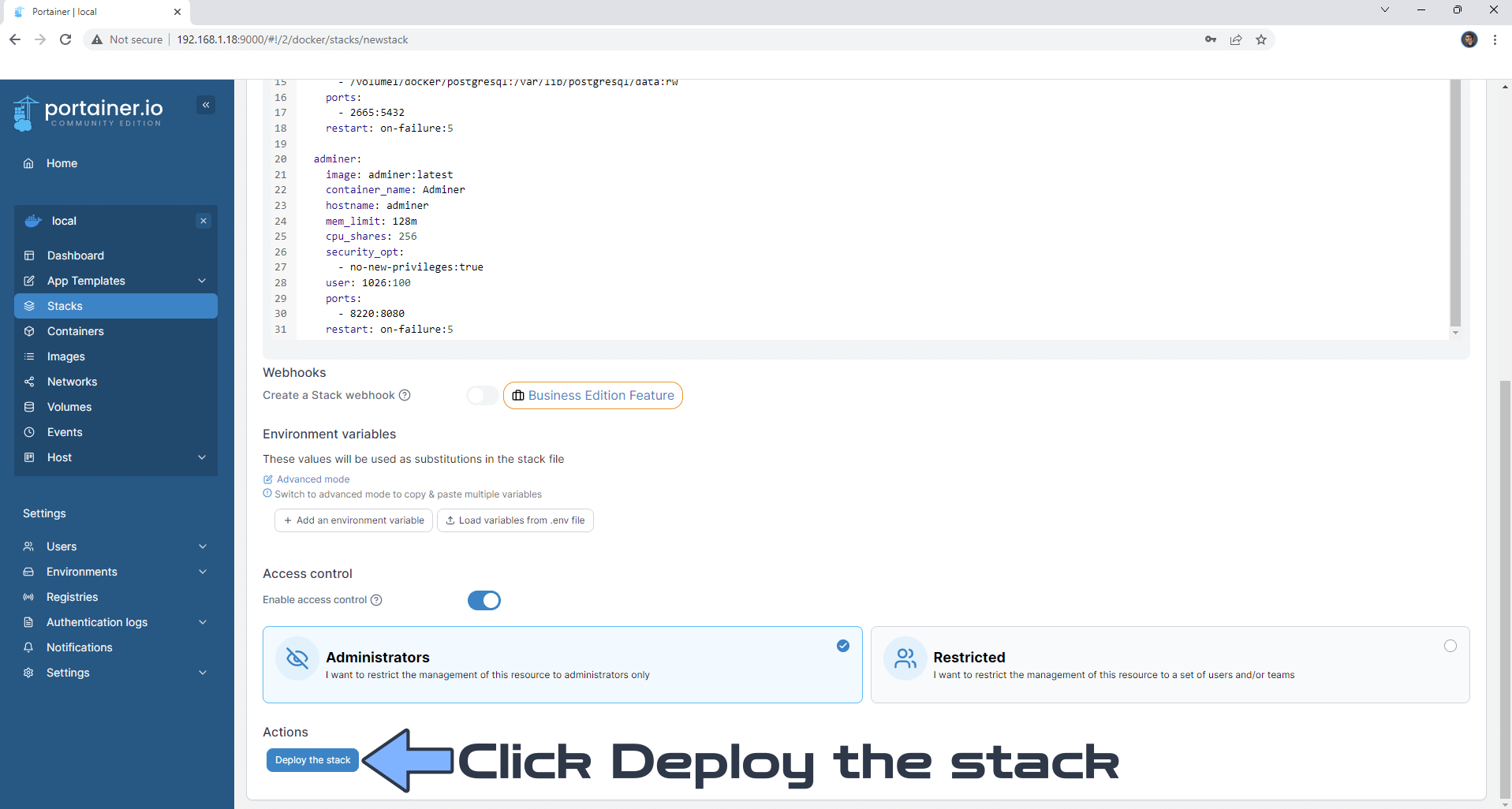
STEP 7
If everything goes right, you will see the following message at the top right of your screen: “Success Stack successfully deployed“.
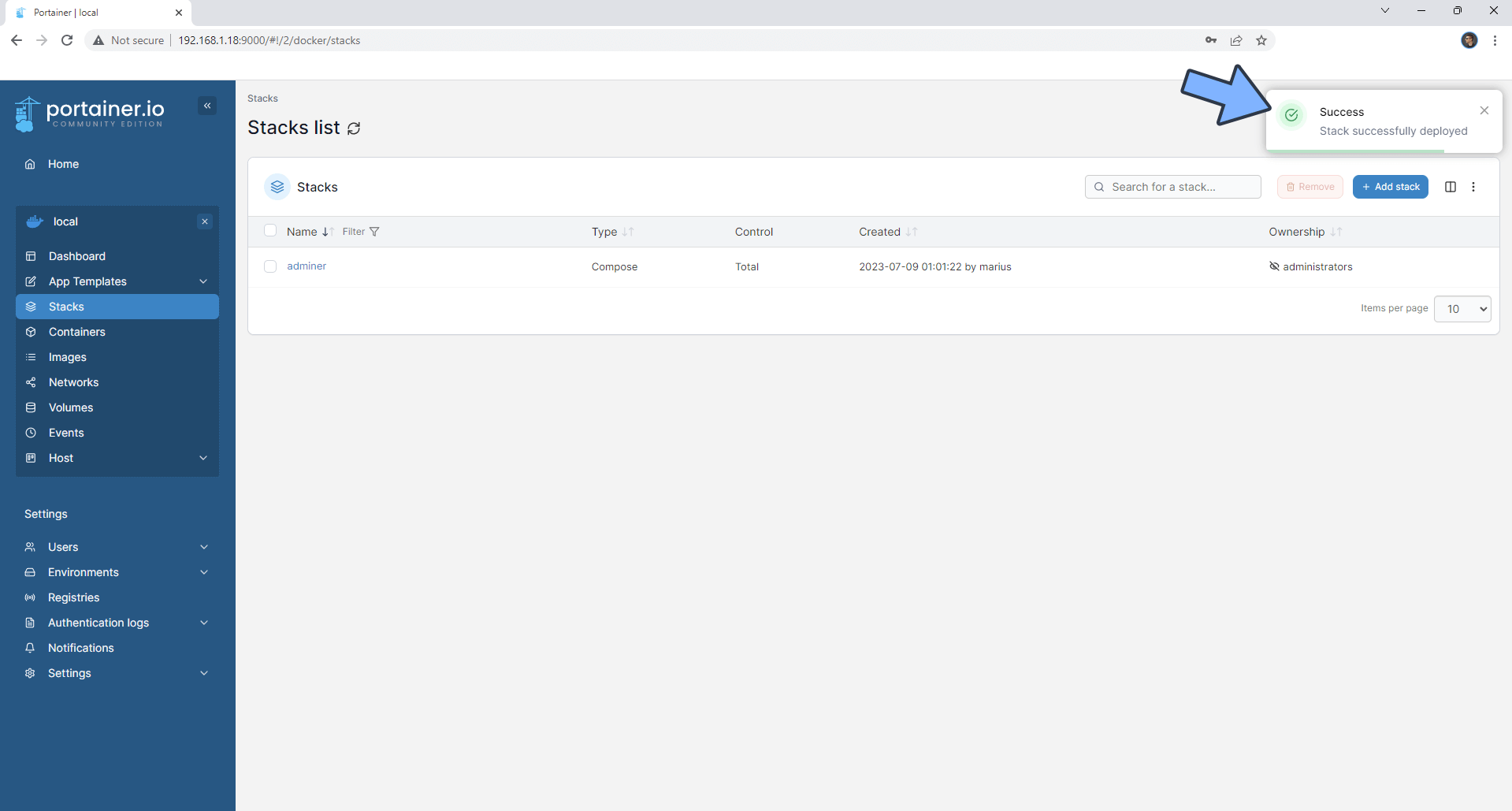
STEP 8
🟢Please Support My work by Making a Donation. Almost 99,9% of the people that install something using my guides forget to support my work, or just ignore STEP 1. I’ve been very honest about this aspect of my work since the beginning: I don’t run any ADS, I don’t require subscriptions, paid or otherwise, I don’t collect IPs, emails, and I don’t have any referral links from Amazon or other merchants. I also don’t have any POP-UPs or COOKIES. I have repeatedly been told over the years how much I have contributed to the community. It’s something I love doing and have been honest about my passion since the beginning. But I also Need The Community to Support me Back to be able to continue doing this work.
STEP 9
The installation process can take up to a few seconds/minutes. It will depend on your Internet speed connection. Now open your browser and type in http://Synology-ip-address:8220 Type in your own PostgreSQL details that you have previously added at STEP 5 then click Login. Follow the instructions in the image below.
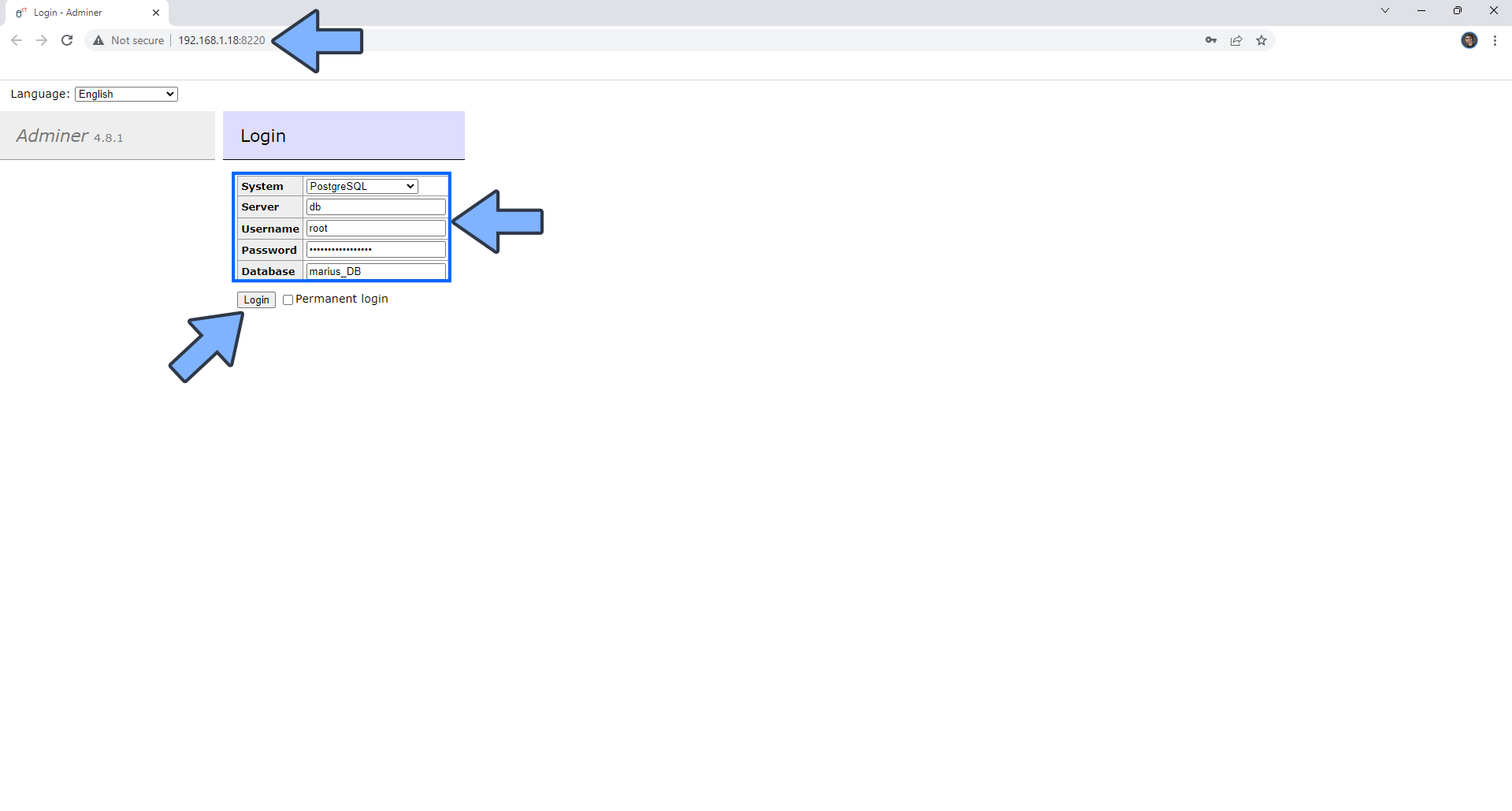
STEP 10
Your Adminer Dashboard at a glance!
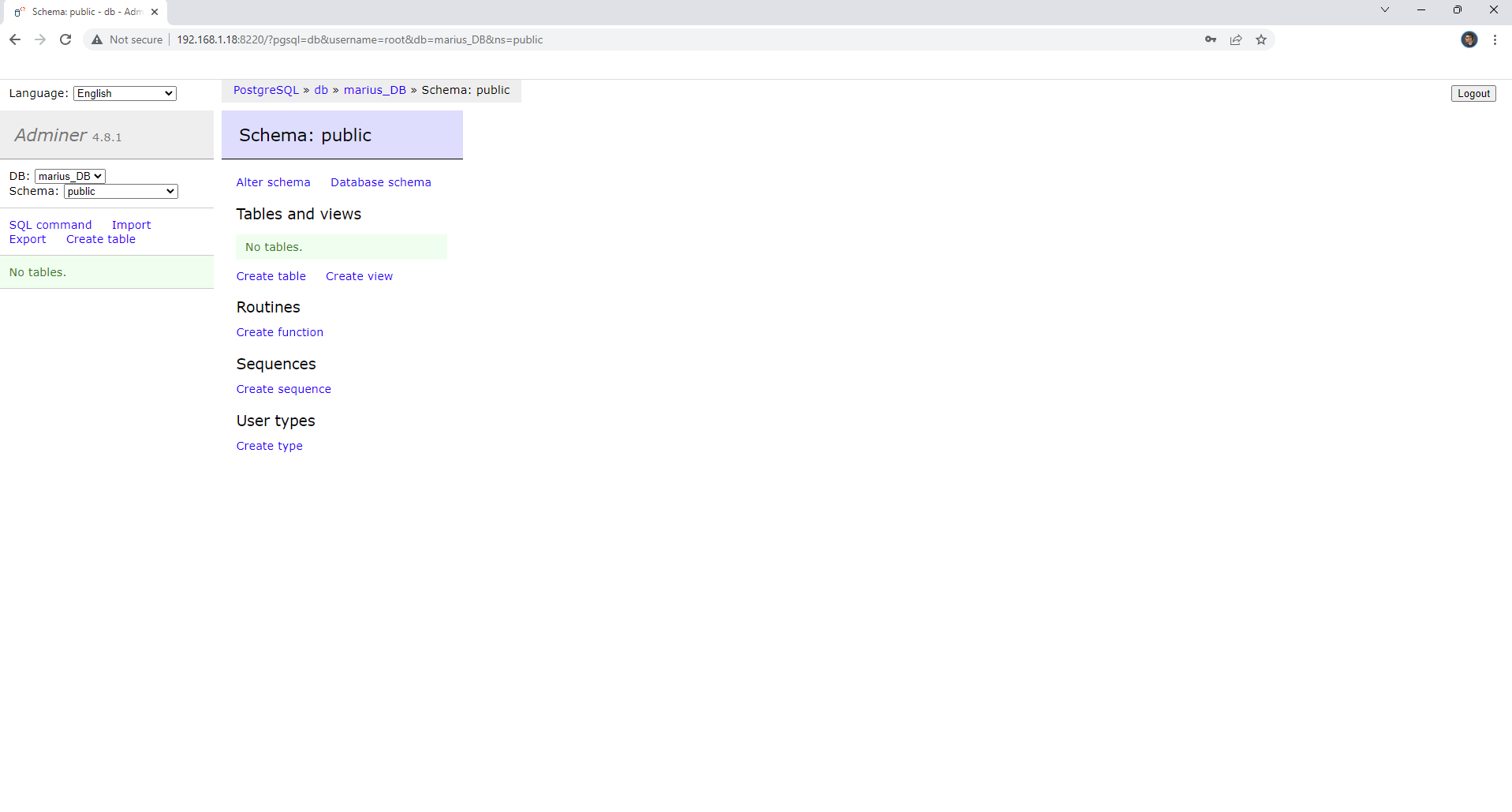
STEP 11
By installing the PostgreSQL database, I wanted to show you how Adminer works. If you want to use Adminer with other docker compose that have a database, just add the adminer compose to your main docker compose.
adminer:
image: adminer:latest
container_name: Adminer
hostname: adminer
mem_limit: 128m
cpu_shares: 256
security_opt:
- no-new-privileges:true
user: 1026:100
ports:
- 8220:8080
restart: on-failure:5
Note: Before you paste the code in the Portainer Web editor area, change the value numbers for UID and GID with your own values. (Follow my step by step guide on how to do this.) 1026 is my personal UID value and 100 is my personal GID value. You have to type in your own values.
Enjoy Adminer!
Note: If you want to run the Adminer container over HTTPS, check How to Run Docker Containers Over HTTPS. In order to make Adminer work over https, it’s also mandatory to set up WebSocket.
Note: Can I run Docker on my Synology NAS? See the supported models.
Note: How to Back Up Docker Containers on your Synology NAS.
Note: Find out how to update the Adminer container with the latest image.
Note: How to Free Disk Space on Your NAS if You Run Docker.
Note: How to Schedule Start & Stop For Docker Containers.
Note: How to Activate Email Notifications.
Note: How to Add Access Control Profile on Your NAS.
Note: How to Change Docker Containers Restart Policy.
Note: How to Use Docker Containers With VPN.
Note: Convert Docker Run Into Docker Compose.
Note: How to Clean Docker.
Note: How to Clean Docker Automatically.
Note: Best Practices When Using Docker and DDNS.
Note: Some Docker Containers Need WebSocket.
Note: Find out the Best NAS Models For Docker.
Note: Activate Gmail SMTP For Docker Containers.
This post was updated on Wednesday / January 22nd, 2025 at 1:12 PM
